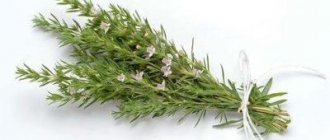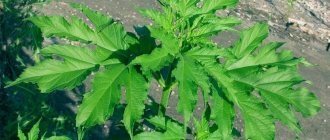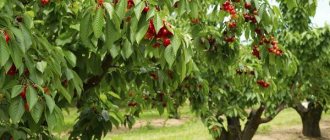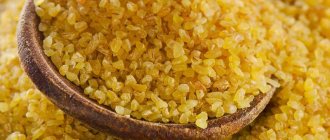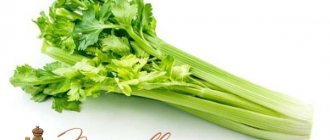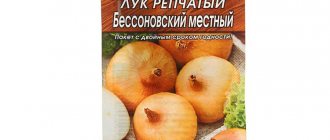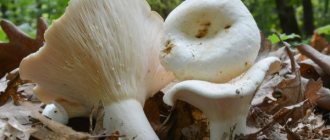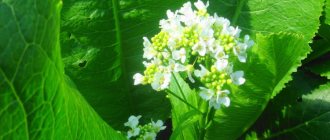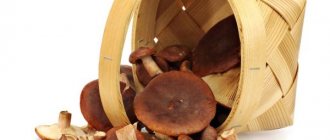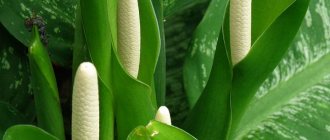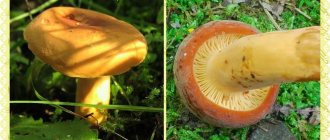Description of the vegetable
Celery is a biennial or perennial plant of the Apiaceae family. There are about 20 types of this vegetable crop in the world, but only a few are the most popular. In our country, mainly two-year-old celery is bred, because already in the first year of cultivation the plant forms a rosette of dark green smooth leaves.
Depending on the variety, a root crop or root develops.
The following year, the vegetable crop grows leaves as early as March and forms a straight trunk up to a meter high. To this end an umbrella inflorescence develops. So already in July, celery blooms and forms seeds, and then dies.
Perennial celery is called lovage. It is easier to grow because it does not need to be planted in the ground every time. Once sown, you can enjoy it for several years. It is frost-resistant and unpretentious, and also has a number of useful properties. So it can be eaten in its entirety: from roots to leaves. And in any form: from fresh to boiled.
Composition and beneficial properties of celery
This vegetable crop is very rich in vitamins, proteins and minerals. The amino acids contained in celery - carotene and tyrosine - help relieve tension and stress. They claim that the beneficial substances in the culture slow down the aging process, so this product is recommended for older people.
B vitamins, vitamin E and ascorbic acid normalize the functioning of the body; eating celery improves immunity and prevents cardiovascular diseases. Thus, constantly adding vegetables to your diet helps increase hemoglobin levels due to its high iron content. Magnesium and calcium, which are present in large quantities in the plant, help reduce stress levels and make bones stronger.
For 100 grams of peeled celery there is:
- 320 mg potassium
- 68 mg calcium
- 80 mg phosphorus
- 9 mg magnesium
- 0.5 mg iron
- 0.3 mg zinc
Celery is considered a good remedy that can help with diseases such as:
- Rheumatism
- Kidney failure
- Gout
- It is recommended for use by patients with diabetes mellitus
A distinctive feature of this product is its diuretic properties. The plant helps with genitourinary problems, as well as kidney and liver diseases.
Medicinal properties
Celery has long been known for its healing properties, which is why it was used in various rituals, and wreaths woven from celery were considered magical. The plant was brought to Russia back in the 18th century and since then it has become very popular among the people.
Celery is still considered a unique product today, containing many vitamins such as B, C, A, E, P, as well as mineral substances: zinc, potassium, iron, magnesium. Thanks to such a rich composition, the medicinal plant: normalizes blood pressure, is used to increase immunity, has a beneficial effect on hormonal levels, and helps fight colds.
This plant perfectly cleanses the entire body by removing various toxins from it, relieves tension, improves the condition of the body in case of diabetes, and removes salts from the body. Celery has an excellent effect on metabolic processes in the body, and is also used in the treatment of rheumatism and arthritis. In addition, this plant has excellent anti-inflammatory, anti-allergenic and wound-healing properties. The juice is considered an aphrodisiac.
The plant is used fresh and dry. Various tinctures and decoctions are made from the dry plant; the most useful are celery roots and its herbs. The juice is squeezed out of the fresh plant or salads are made.
Types and varieties of celery
There are three types of this vegetable - leaf, petiole and root. Each has its own advantages:
- The leafy variety makes it possible to obtain green and lush foliage. They can be left throughout the spring and summer. Popular varieties: Tender, Kartuli, Zakhar.
- Petiole celery requires a certain skill, so it is grown by experienced summer residents. You can even get alcoholic drinks from it. Popular varieties: Young, Malachite, Golden.
- But the root one is ideal for growing yourself. Both tubers and greens are suitable for consumption. In a good year, you can get up to 800 g of roots from one fruit. Popular varieties: Maxim, Diamond, Apple.
Depending on individual preferences, a summer resident can choose any of the varieties he likes. But if he prefers stalked celery, he will have to be patient to breed it.
All types of plants prefer quiet places with plenty of light and soil rich in nutrients.
However, if the growing conditions change, for example, the presence of partial shade or an increased level of soil acidity, the harvest will not be less. Celery adapts and the smell of the leaves may change in the output. The growing season of the vegetable is at least 180 days. And although celery is considered a fairly cold-resistant plant, it is difficult to provide it with the necessary weather conditions for a long time. Therefore, its propagation is best done by seedlings. To prepare the seeds, you need to first soak them in a weak solution with potassium permanganate. After this, put it on a cloth and place it on the windowsill so that the seeds germinate a little. After this, they are ready to be placed in the ground.
Lovage and cooking
Thanks to its spicy aroma, the herb is not the last ingredient in cooking, and the greens, roots, and seeds of lovage have worthy uses.
The roots are used as a spice in powdered or crushed form. Grated, it goes well with other vegetables in salads, sauces for main courses, and aromatic oil is also prepared from it. Candied fruits and jam are prepared from young fresh rhizomes.
The stems and leaves are used in salads, first and second courses, sauces and seasonings for meat, poultry and fish. Winter celery is popular in various butter and cheese mixtures and snacks.
The leaves are often used as a spice in savory desserts and added to marinades. The top of the plant and the seeds add an interesting flavor to the pickles. Lovage has long been included by nutritionists in the menu of diets - medicinal and for weight loss.
Did you know? Soldiers of the Roman legions took plant seeds with them on campaigns in distant lands: thus, for example, fennel, parsley and lovage came to England.
Growing Leaf Celery
The best soil for growing leafy varieties is considered to be soil made from sand, leafy soil, humus and peat. All components are mixed equally to one. In early spring, you need to plant the seeds in the ground.
To do this, it is best to take a wooden pot or box in which to place the appropriate soil. Next, you need to take the seeds and plant them not deeply, pressing them with your fingers. Sprinkle a small amount of peat on top. This box must be placed in a warm, bright place with a stable temperature of 18-20°C. A week later, when the seeds sprout, the temperature will need to be reduced to 15 °C.
Seedling care:
- In the first two weeks, the soil should be moist. To do this, you should regularly water the seedlings through a sieve. But it is important to ensure that no puddles form. You can't overwater the plant either.
- When the sprouts produce 1-2 leaves, you can safely dive. Each plant needs a little space, so you can plant up to 4-5 sprouts in one half-liter plastic cup. When planting leaf celery, you not only need to replant the seedlings, but also pinch the root. This makes the seedlings stronger.
It is necessary to replant into open soil in early May. The distance between seedlings is 25 cm. It is important not to bury the seedlings too much in the ground, otherwise they will not grow and will wither. It is worth carrying out systematic watering and periodically loosening the soil. If you adhere to the right technology, you can collect them already in mid-summer.
Preparing and sowing seeds
This crop is grown mainly by seedlings. First, seeds are prepared to improve their germination. For this purpose, they are soaked in a special solution, for example, warm water with manganese diluted in it, and left for a couple of days. Then the planting material is germinated on moistened fabric for several days. When the seeds hatch, they are sown in nutritious soil prepared in advance. It is best to use a mixture of humus, sand, peat and leaf soil in a ratio of 1:1:1:1. Sowing of leaf celery is carried out in early March, and root celery a month earlier (in the 1st-2nd decade of February), in boxes with the specified soil mixture. The seeding depth should be small so that the growing point is on the surface of the soil. They are sprinkled with peat on top and kept at a stable temperature of +17+20°C. As soon as the seeds sprout the first shoots (about 5-6 days), the air temperature should be reduced to +15°C. All this time, the plant requires active watering (preferably through a sieve). To prevent the seedlings from stretching out, they are illuminated with phytolamps. It is recommended to thin out dense crops as the seedlings grow, removing the weakest ones and leaving the stronger ones. This will give them more room to grow. After the formation of the second true leaf, celery is dived into separate cups while pinching the main root. A week before transplanting into the garden, the seedlings are taken out to the balcony for hardening
When transplanting into another container, it is very important not to fill up the central bud of the plant, but to deepen it only to the base of the leaves. Both varieties of seedlings are transferred to open ground in April or early May. Celery prefers well-drained and wind-protected places with fertile soil.
But it is quite possible to plant this crop in partial shade, on slightly acidic soils. In this case, the harvest will not be less, the only thing is that you may get some changes, for example, different taste qualities or aroma of the plant. Planting scheme for root celery is 30x30 cm, leaf celery is 25x25 cm.
Growing Celery Root
This species has a long growing season, so it is important to start preparing seedlings not in early March, but in early February. Otherwise, growing seeds is similar to the previous conditions.
Care immediately after transplanting into the ground should be systematic and vigilant. So, it is important to frequently replenish with water and regularly loosen the soil, well, after each watering. It is necessary to uproot the weeds that form around the vegetable; they can take away the nutrients the plant needs.
Already in mid-autumn you need to start directly harvesting root celery.
Important! Under no circumstances should you hill up root celery! This may affect the quality of the vegetable. You can do the opposite - remove the top layer of soil from the top of the root crop.
Please note that you can pick off the leaves as the celery grows, but it is better not to do this. Three weeks before harvest, you can begin to carry out this procedure, as well as further remove the soil from the root crop.
Growing petiole celery
Growing seeds of this species is identical to growing leaf celery. However, there are differences in caring for seedlings in open ground. Celery should be planted much deeper - the recesses should be up to 10 cm. It is important not to sprinkle the top bud with soil, but after some time, carry out hilling.
The harvest must be done before the first frost.
An interesting way is to bleach the roots. Two weeks before harvesting celery, you can tie up the petioles and wrap them in paper. This will make the vegetable more tender and sweet.
Pests and diseases
Although celery is a simple and unpretentious crop, if not properly cared for, the plant can get sick and even die very quickly. The main dangers for vegetables:
- Cercospora blight is a disease that affects the upper layers of the plant. A distinctive feature is that spots appear with smooth edges, often of a purple or brown hue. Often occurs in damp and cool weather. Cercospora infection should be treated with Fundazol solution. To do this, you need to spray the plant no later than three weeks before harvesting.
- Powdery mildew affects the entire plant. This is a white coating on the leaves that causes the plant to rot.
- Rust - manifests itself as characteristic damage on the leaves of the plant and leads to its drying out. It usually affects the vegetable in early summer. To prevent the disease from occurring, you need to spray the plant with Bactofit.
- Cucumber mosaic is a viral disease that causes slow growth of the vegetable. A characteristic sign is the appearance of rings in the upper part of the plant. It is impossible to cure damaged celery, but you can destroy the pests that carry cucumber mosaic.
The plant can be destroyed not only by diseases, but also by pests. These include:
- The celery fly is harmful because it lays eggs under the skin of the leaves, from which larvae emerge. These larvae eat the plant and it dries up. To prevent the pest from penetrating the vegetable, you need to regularly destroy the weeds around it and carry out chemical treatments.
- Carrot psyllid is a pest that attacks leaves by sucking the juice from them. They curl and the plant withers. To avoid insects from appearing on the plant, it is necessary to regularly loosen the soil.
- The bean aphid is distinguished by its high fertility. Every two weeks a new generation appears. They are very easy to notice - they stand out as black dots on a green leaf. To avoid the appearance of bean aphids, you need to harvest on time. If the pest has just appeared, the plant should be sprayed with a decoction of yarrow or dandelion.
To minimize the risk of diseases and pests, it is necessary to correctly carry out the procedures for sowing and transplanting seedlings. It is important to adhere to the watering schedule and hill up the celery in a timely manner. Correct agricultural technology will help you get the best results and avoid troubles.
What you need to know about caring for lovage
Lovage is not a capricious plant: both cultivation and care are not associated with any difficulties. The plant needs abundant watering in the absence of rain, weeding and loosening the soil, pruning leaves in the second year of life and fertilizing.
We suggest you read: Do mushrooms grow in the garden?
You can feed the plant with bird droppings, mullein infusion, and mineral compounds. During the growth period, nitrogen is needed, later - phosphorus and potassium. To develop a strong root system, the flowers of the lovage are removed. Don’t overdo it here either: you need to leave a few flower stalks.
Attention! The flowers of the plant attract beneficial insects that destroy pests.
Uses of celery
In folk medicine, celery is actively used:
- In the treatment of ulcers, rheumatism and kidney disease. Freshly squeezed juice has a calming effect and is recommended for sleep disorders and high stress levels.
- A decoction of the vegetable for gastritis and other stomach diseases should be taken with caution, because it increases the rate of gastric juice secretion. 20 g of chopped vegetables must be poured with 2 cups of boiling water, kept on fire for 5-7 minutes, and then set aside. After the broth has been infused for 8 hours in a cool place, it needs to be strained. Drink 30 ml three times a day after meals.
- Celery is a hypoallergenic product that is used as a preventive product for allergic reactions. To prepare the infusion, take 2 tablespoons of grated vegetable and add a glass of water. You can take 5 spoons every two hours three times a day 15 minutes before meals.
- If there is sand in the buds, take a tablespoon of plant seeds and boil them in 100 ml of water for 10 minutes. Then pour 15 ml of honey into the broth. You need to take this infusion 3-4 tablespoons before meals.
Celery is an important vegetable that is rich in vitamins. It is easy to grow and can be used both as a common food item and as a medicinal product.
More information about growing celery can be found in the video:
Use of lovage in folk medicine (recipes)
The roots of the plant are actively used in pharmacology as raw materials for medicines for the following health problems:
- anemia;
- swelling;
- dropsy;
- pyelonephritis;
- impaired urination;
- gout;
- inflammation of the kidneys and bladder;
- migraine;
- respiratory catarrh;
- rheumatism.
Important! In addition to its benefits, lovage can also cause harm: taking it as a medicine, people with problems with the ureters and kidneys should be careful in dosage.
In gynecology, herbal preparations are used for inflammation of the female genital organs, to normalize the menstrual cycle, and relieve pain during menstrual periods.
The benefits of lovage in the treatment of the reproductive system, both female and male, are also known (the active substances in the composition stimulate blood circulation in the pelvic organs).
Homeopathic remedies based on lovage are used in the treatment of cardiovascular diseases, throat and respiratory diseases, neuroses and hysteria. Doctors admit that winter celery, when eaten regularly, significantly improves immunity.
In folk medicine, lovage has long been recognized as an effective medicine with a wide range of uses. A decoction of the root helps in the treatment of genitourinary problems, kidney diseases, as a diuretic and for menstrual pain.
It is prepared as follows: roots (40 g), pre-soaked for a day, are boiled in a liter of water for about seven minutes. The decoction should be divided into five parts and drunk throughout the day.
Important! There is an opinion that you should not boil the root, because this will evaporate the essential oil components.
- one of the main forms of use in folk medicine. To prepare, take a teaspoon of ground root, pour a glass of boiling water, and leave for half an hour. The infusion is taken to enhance potency three times a day, a tablespoon.
Externally, this infusion helps to cure purulent inflammations on the skin; it must be prepared in large quantities and diluted - used for baths for psoriasis, eczema, and neurodermatitis.
Lovage brings significant benefits in getting rid of age spots, the recipe is as follows: a teaspoon of ground roots and leaves is poured into 250 ml of boiling water. Leave for an hour, then boil for twenty minutes in a water bath. Wipe your face with the strained broth twice a day.
Hair mask: 20 grams of crushed dried root, pour 250 ml of boiling water, let it brew in a thermos for 6-8 hours.
Then strain the mixture, rub into the scalp, wet the remaining length of the hair, wrap the head in a towel and leave for an hour. Rinse with running warm water without using shampoo.
Infusion for gargling: pour 150 ml of boiling water over a tablespoon of crushed root and leave for an hour. Before rinsing, warm up slightly and carry out the procedure three to four times a day.
Lovage root, despite its medicinal properties, also has contraindications. It is forbidden for pregnant women to be treated with it: by causing blood flow to the pelvic organs, the herb can cause a miscarriage.
It is contraindicated to use drugs based on the herb for glomerulonephritis and pyelonephritis, stomach and duodenal ulcers, and hemorrhoids.
Today, many people are thinking about healthy eating, and many previously forgotten vegetable crops are returning to the dinner table. Perhaps the specific smell and taste of winter celery is not to everyone's liking, but this herb is certainly useful and healing.
Was this article helpful?
Thank you for your opinion!
Write in the comments what questions you have not received an answer to, we will definitely respond!
You can recommend this article to your friends!
You can recommend this article to your friends!
Yes
No
Already helped 213 times
Lovage has a popular name - mountain celery. In fact, they are the closest botanical relatives, and even have a salty, bitter, pungent odor.
In the wild, lovage can be found in the mountains, which is why the name mountain celery appeared. It also grows wild in lowlands, only it grows much more luxuriantly in such places. After reading this article, you will learn about the beneficial properties of lovage, its cultivation and breeding.
I think that such a fragrant and medicinal plant should be grown in your summer cottage. It is unpretentious in cultivation, does not require much sun, and tolerates winter cold well. Can grow on any soil.
Lovage has been known since ancient times in Rus'; miraculous properties were attributed to it, and legends were made about it. He was especially respected in our south and was called by tender names, like darling, love-me, darling.
Young girls bewitched young men with the plant. And when they got married, they sewed it into their wedding dresses. It was believed that the husband would love all his life. Therefore, it was grown in every yard.
In the old days, it was believed that lovage gave a person strength and good spirits.
This tall plant with dense foliage and large green, polished leaves also has a decorative effect. Having planted lovage in your summer cottage, you will admire it in the second year. It will surprise you very much with its height.
The height of the plant in the second year will be two meters and will bloom with yellow flowers collected in an umbrella. Every year the lovage will grow more and more, spreading out very beautifully.
We invite you to read: Celery juice - benefits and harms: 15 beneficial properties and contraindications of celery root juice
Every guest who comes to your site will immediately notice this plant and will ask you about its name.
Beneficial features
Since ancient times, our ancestors knew about the nutritional, aromatic and medicinal properties of lovage. It contains a lot of potassium salts, vitamins, minerals, and essential oils. The roots contain sugar, tannins, and starch. malic acid, resin.
Traditional medicine used its juice and made infusions and decoctions. It was used as a diuretic, tonic and expectorant. It was also used for constipation, as well as to strengthen and enhance hair growth. The whole plant was used: leaves, seeds and root.
How to grow
Lovage can be propagated by seeds, which can be planted before winter or early spring. It can sprout in spring and from self-sowing. Such fallen seeds produce good seedlings.
They can be planted in a garden bed and new plants can be grown. In addition, you can divide perennial roots. For long-term cultivation, one powerful bush is enough for you.
In autumn, it is advisable to sprinkle the plant with peat or humus.
Lovage grows on almost any soil: sandy, peaty, clayey, but it grows best on nutritious, loose and moderately moist soil.
It is not recommended to add a lot of nitrogen to it, as this will make the plant powerful, the root will reach enormous sizes, and the pulp will lose its taste, become soft and loose, and darken when cooked. It is best to apply fertilizers containing potassium and microelements under the lovage.
Before sowing, you need to add 5 kg per 1 square meter to the soil. humus, 20 grams of superphosphate, 20 grams of urea, a glass of ash and 30 grams of potassium sulfate.
If you grow lovage for the purpose of using the roots, then remove the flower stalks in a timely manner. It is also not recommended to cut a lot of greenery, this will affect the filling of the roots. It is enough to leave 1 plant for seeds.
The roots are dug up in the fall, the greens and roots are cut off, and stored in the basement. They are laid close to each other and sprinkled with sand. The roots are dug up in the second year, since in the first year they are still small.
Usage
You can prepare many dishes from lovage. The root can be used boiled, stewed, fresh, and also added to soup, meat, cutlets, purees, vegetables and casseroles.
Young greens are used as a seasoning, which goes well with soups, salads and other dishes. It is good to dry the greens, roots, seeds, and use them as a seasoning in winter.
Try pickling young greens for 1 kg. greens require 200 grams of salt.
Boiled roots are added to salads; they go well in salads with other vegetables, such as carrots, beets, and cucumbers. And in early spring, if there is a lack of vitamins, you can dig up the roots and prepare a healing salad, peel and grate it. Add carrots, apples to this salad and season to your liking.

